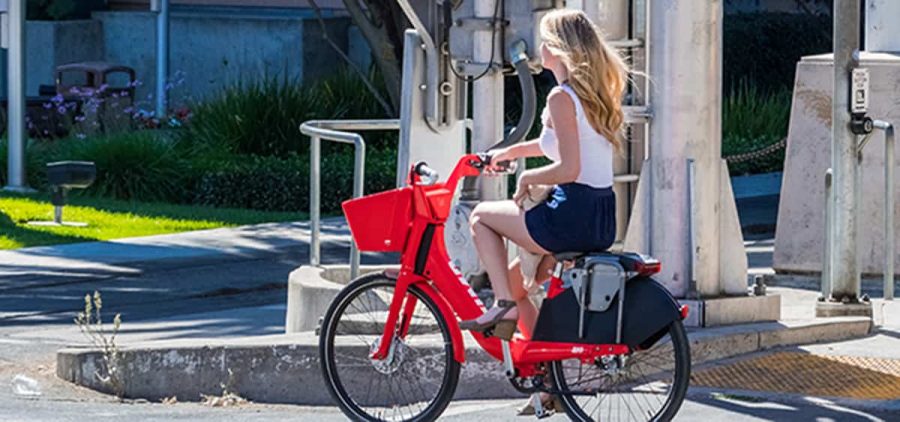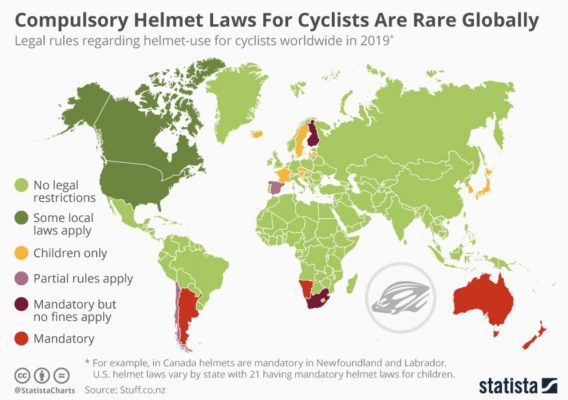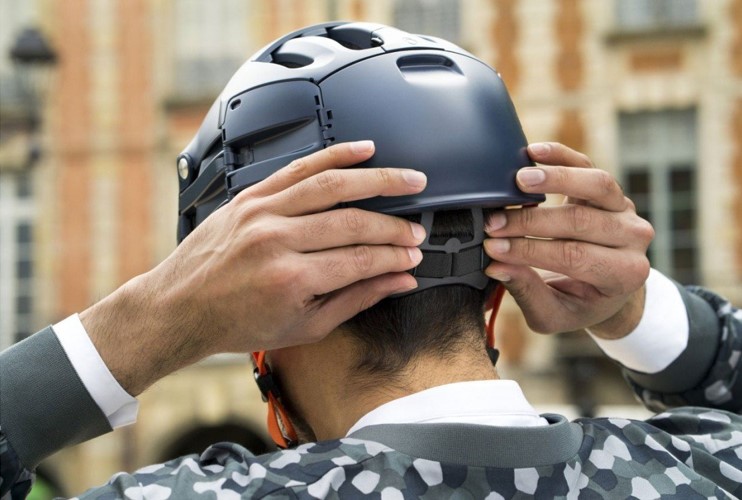
Although French law does not require any safety equipment or compulsory accessories for cyclists, with the exception of helmets for those under 12 years of age and visibility jackets outside built-up areas and at night, the following is a non-exhaustive list of essential safety equipment and accessories for cyclists.
Is a helmet compulsory when cycling?
Simple helmet, folding helmet, illuminated helmet, helmet with indicator …. The helmet market is booming because the number of cyclists is constantly increasing and because it is the most important accessory, although surprisingly it is not compulsory for everyone.
French law states that only drivers and passengers under 12 years of age on a cycle in traffic must wear a helmet… attached. Are our heads harder after 12 years? Certainly not in the event of an impact with a vehicle or the ground. Injuries due to impact on the skull remain the leading cause of death among cyclists (3 out of 4 deaths).
It should be noted that helmets are compulsory for adults riding a speedbike (a bicycle that goes faster than 25km/h and up to 45km/h because it is then considered as a moped).
What are the penalties for not wearing a helmet when cycling?
As wearing a helmet is not compulsory for an adult in France, he or she risks nothing. If they are carrying a child who is not wearing a helmet, the fixed fine is €135. If the child’s helmet is not attached or not properly attached, a fine may be imposed.
What are the standards for a bicycle helmet ?
It is not advisable to use a used or second-hand helmet as it is not possible to tell if it has been damaged. It is also advisable to change helmets regularly because with time and UV rays, the shock absorbing materials can harden and no longer be as protective. Here is some tips from bicyclereviewguru on how to know if a bike helmet is safe.
Bicycle helmets are subject to standards such as homologation or CE marking. The latter must be accompanied by other indications such as :
- The number of the norm
- Manufacturer’s name or brand
- Date of manufacture
- Size and weight
According to the European standard EN 1078, the helmet must :
- Fit snugly on the rider’s head depending on the size of the head (from 53 to 60 cm)
- Perfectly cover the different parts of the head such as the forehead, temples, sides, back and top, especially for children.
- Be equipped with very resistant shock absorbers
It is possible to add comfort options such as ventilation to aerate the skull, a foam and a knob in the inner shell for more comfort and better readjustment of the helmet, a visor to avoid glare or a light.
In all cases, the helmet must meet the requirements:
- Either the NF EN 1078 + A1 standard which refers to helmets for cyclists as well as for those using roller skates and skateboards.
- Or NF EN 1080 which refers to impact protection helmets for young children.
In which countries are helmet compulsory for riding ?
Helmets are mandatory in Australia, New Zealand, Namibia and Argentina. It is also compulsory in Finland and South Africa, but there is no fine if you forget. It is compulsory for children in France, Iceland, Austria, Slovenia, Sweden, Japan and Taiwan.
On 13 January 2021, the French Senate rejected a bill aimed at making the wearing of helmets compulsory. The first reason is technical, as the senators believe that such a decision is not a legislative matter but a regulatory one, i.e. a matter for the State. The second reason is that the obligation to wear a helmet, and the related sanctions, would reduce the practice of cycling, even though everyone agrees that the benefits of cycling are major from an ecological and public health point of view.

If you are interested in the subject of helmets and want to know more about it, here is a very good article from Slate to read.
Is a retroreflective waistcoat mandatory when cycling ?
A certified retroreflective waistcoat must be worn by all cyclists and their passengers when riding outside built-up areas at night or in poor visibility. It does not need to comply with the EN20471 standard reserved for professional clothing. This waistcoat multiplies the visibility distance of the person wearing it by 3 during the day and by 6 at night.
So why limit this obligation outside built-up areas? The visibility of a cyclist in town, at night and even during the day, is still very poor. Don’t motorists have to wear a waistcoat by day and night as soon as they get out of their car on a motorway? Wearing a retroreflective waistcoat is therefore strongly recommended everywhere and all day long.
Are gloves compulsory when cycling ?
Anyone who has ever crashed a bike will tell you that wearing a pair of gloves is more than necessary. However, this is not compulsory for cyclists, although it has been for drivers and passengers of motorised two-wheelers since 2016. Fortunately, winter temperatures are pushing many cyclists to at least equip themselves to protect themselves from the cold.
Is the Air bag jacket mandatory for cycling ?
The air bag jacket for cyclists has just arrived on the market. In the event of the slightest impact or fall, it inflates in a few milliseconds to protect the thorax and spine. It is the ultimate safety item for which you will have to invest a few hundred euros.
Is a pollution mask compulsory when cycling ?
Even if they are not protective elements in the event of a shock or fall, anti-pollution masks remain the best way to protect your respiratory tract from fine particles linked in particular to exhaust fumes, but also from pollens in the spring and the cold in the winter. It is recommended to use a mask with a filtration standard of at least FFP2 such as Frogmask, whose FFP2 filters block particles down to 0.4µm. Their fastening system behind the neck allows great comfort without pulling behind the ears and facilitates the wearing of a helmet.

Can you cycle while listening to music ?
Also note. It is forbidden to wear any device that can emit sound (earphones, headphones or ear buds) on your ear. The use of hand-held telephones is also prohibited. There is currently no device allowing cyclists to make phone calls on the road, so entrepreneurs beware !

